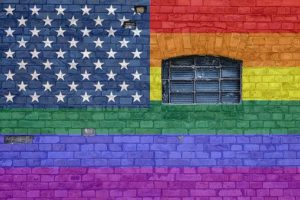 I have zero tolerance for hiding. I came out to my father when I was 22. His response? “This can be our secret.”
I have zero tolerance for hiding. I came out to my father when I was 22. His response? “This can be our secret.”
Don’t worry — he and I have worked through it (hi dad!) — but his first reaction was to ask me to hide myself (to buy into my shame) to spare himself and others the discomfort of seeing my true self.
Fifteen years later, I was diagnosed with breast cancer, and I heard a hint of my father’s voice in the words of the plastic surgeon. He offered to reconstruct my breast by carving out a slab of my back muscle, wrapping it around my front, and tucking it over an implant, like a steak over a tennis ball. (Called a latissimus dorsi flap, the surgery is one of the most common reconstructive options after breast cancer.)
“Isn’t that back muscle doing something?” I asked.
“You’ll look normal in clothes,” he shrugged. “That’s all most women want.”
Really? Is that really ALL most women want?
The panic of being outed as breastless
I spend time in breast cancer groups on Facebook filled with women who’ve gone flat. Many are out and proud, but others wring their hands about what will happen if they go out in public without their prosthesis. They don’t like wearing fake boobs, what women in the groups call “foobs,” but they are scared to be seen in public without breasts.
I do not want to minimize their fear. The panic of being “seen” or “outed” is real. And my intention is not to judge prosthesis as good or bad. (After all, queers know a thing or two about the joys of a good prosthesis.) My intention is to give women permission to do what feels good to them, not what feels good (aka comfortable) to other people. In that way, the flat movement and the queer movement have something in common. We want to be seen and accepted.
And when I say the “flat movement,” let’s clarify that (as far as anyone knows as of yet), the number of women choosing to go flat is NOT increasing. Historically in the United States, approximately 25 percent of women who undergo bilateral mastectomy and 50 percent of women who undergo unilateral mastectomy have chosen not to reconstruct, meaning they’ve gone flat on either one side or two.
Those are significant numbers: 1 in 4 double mastectomy patients and 1 in 2 single mastectomy patients. As of yet, those numbers aren’t shifting, and that’s fine because what’s important is not “recruitment” it’s about honoring a woman’s choice.
The Power of Flat Visibility
What is shifting is the antiquated notion that women who go flat must hide their bodies. With the rise of women’s voices, especially in the era of #MeToo, women are coming out of the shadows. Flat visibility is about refusing to continue to buy into the narrative that women without breasts are disfigured.
In the past few years, several celebrities have gone flat in public ways, including Tig Notaro, Kathy Bates, and Anjelica Huston. Last year, Equinox gym built an ad campaign around a flat model, complete with mastectomy scars. And in the past two years, breast cancer patients who’ve chosen to go flat have been featured on the Today Show, CBS Sunday Morning, and on the front page of the New York Times. This is only the beginning.
The more of us who come out with our fabulous flat chests, the more we’ll emboldened those who are still in the closet. Again, wear the foobs if they make you feel beautiful! But don’t wear them like a hair shirt because you’ve been “disfigured” by cancer and are afraid to make others uncomfortable.
Take a page from the queer playbook and embrace your difference as your strength.
It’s so refreshing to hear the voice of authenticity and not shame. Keep talking, Catherine!!!
Yes yes and more yes. Thanks for all you do.